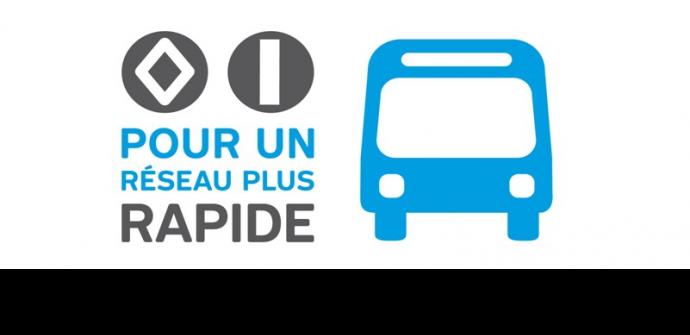During a technical briefing held this morning, the STM gave an overview of bus preferential measures (BPM) currently deployed and presented its objectives in that regard as outlined in its 2020 Strategic Plan.
During a technical briefing held this morning, the STM gave an overview of bus preferential measures (BPM) currently deployed and presented its objectives in that regard as outlined in its 2020 Strategic Plan.
By December 31, 2013, bus preferential measures will cover 190 kilometres along 29 corridors in Montréal. By 2020, the STM hopes to have deployed such measures along 56 corridors, covering a total of 370 kilometres, which by then will involve some 700 000 passenger rides each day.
Bus preferential measures (BPM) consist of various installations on the road system that ensure priority is given to public transit, thereby improving the speed and on-time delivery of service.
More specifically, BPMs include:
- «Candlestick» priority traffic signals
- Active priority traffic lights (in real time)
- Reserved lanes
- Queue bypass lanes
Major advantages
These measures make it possible to provide more reliable, timely and regular service, resulting in considerably shorter travel times and reduced GHG emissions. Furthermore, their deployment is significantly less expensive: between $100 000 and $1 000 000 per kilometre. Public transit users and bus drivers alike appreciate BPMs.
For further information
To find out more, particularly about the criteria for deploying BPMs, financing and corridor selection, please review the document (French only) handed out during the technical briefing.

